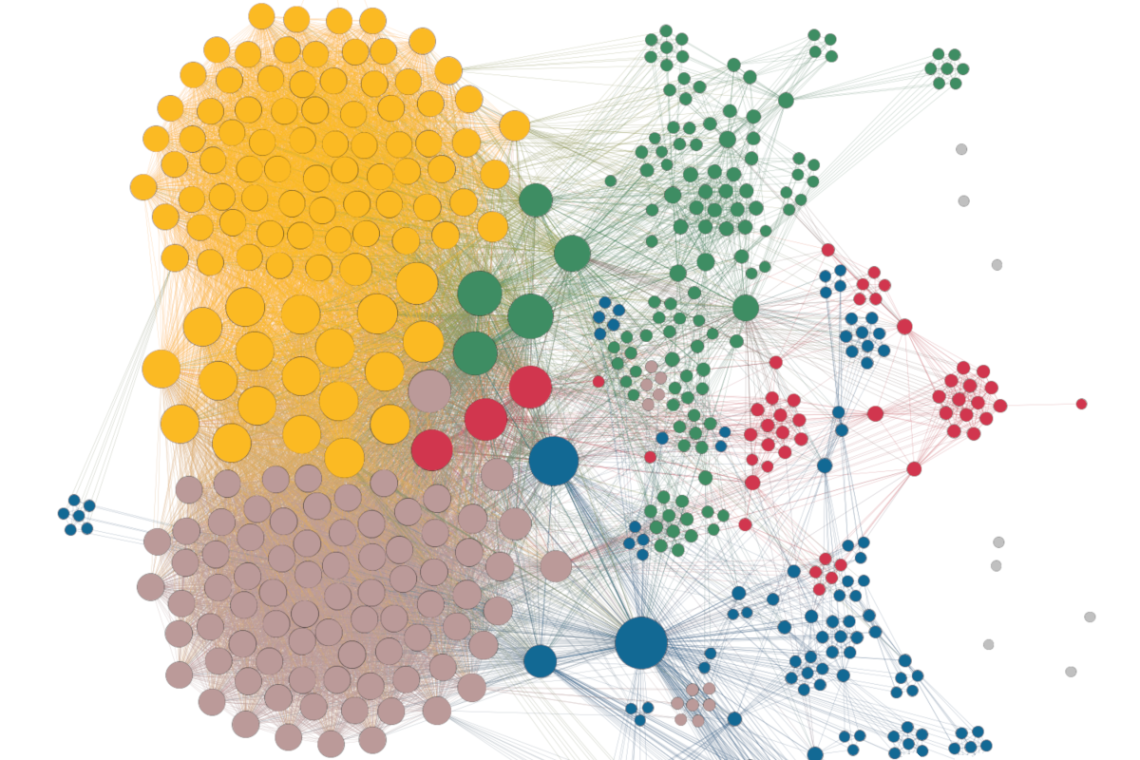
Data Warehouse
As digitalisation increases worldwide, so does the amount and complexity of data on innovations and technologies. As a result, increasingly comprehensive data is available for assessing technological progress and underlying contexts: Funding, publication, patent and company data, as well as data from social media, news websites and other data sources from the fields of research and science, in combination with internal process data from project management, provide a strategic information gain.
We work systematically on extending and improving our data sets, in order to add to, improve and extend our range of services using data discovery and predictive analytics, text and data mining.
The data held in the data warehouse is continually being updated, extended and optimised. To do so, we use intelligent data harmonisation and disambiguation techniques such as fuzzy matching. This produces a ‘learning system’, which can recognise and link together patterns in the data. With every update, the system becomes more accurate and the data held becomes more meaningful. This makes it possible to carry out complex analysis queries efficiently and accurately in just a few steps.
Data Discovery and Predictive Analytics
When it comes to project management and accompanying research, two methods, which are based on automated evaluation of large amounts of data, are becoming increasingly important:
- Data Discovery makes it possible to uncover previously unknown interrelationships in data.
- Predictive Analytics can be used to predict the likelihood of future events occurring.
These methods draw on machine learning techniques, elements of game theory, optimisation models and simulation methods. Options for use and the knowledge gained go far beyond traditional approaches.
On the basis of existing data and in coordination with our customers, we create fundamental mathematical models that can assist in the answering of future questions. Applications include, for example, outflow of funds forecasts for budget management and the classification of texts.
Both methods require suitable availability of data and professional information management – our data warehouse provides both.
Network Analysis
To gain a comprehensive view of the structure of research networks as well as connections and interdependencies between organisations or individuals, we use network analysis.
Alongside social network analysis techniques for identifying and analysing social relationships and interactions, we focus on interactive visualisation of results, allowing multi-layered interpretation of relationships.
Core elements of the analysis are the identification of key players in the research and innovation system, important researcher groups (clique analysis) or the characterisation of entire research disciplines. This analysis is based on previous research collaborations, but also patent collaborations.
The range of applications is diverse: Research fields can be examined, main players can be identified, international connections between organisations, and value creation chains and ecosystems can be analysed. The analysis provides additional information for assessing the state of the art and competition structures. It also enables approaches for targeted expert scouting.
Text and Data Mining
In order to get the most out of the continually growing stock of funding-relevant data, we develop fully and partially automated analysis techniques. This allows us to support various aspects of the funding process.
Recognising Relevant Content Automatically
As the wealth of data grows, so too does the effort involved in evaluating data manually. This can lead to shortcomings in terms of service efficiency (e.g. in selecting a suitable expert for a project) and in the quality of the result (e.g. when dealing with a search in the context of topic monitoring).
We enhance our text analysis techniques on an ongoing basis in order to find topic-relevant content in large amounts of data and to arrive quickly at the right results.
Identifying Funding Topic Areas
Topic trends and priorities exist regionally, in industries or player groups, across society as a whole, but also within funding measures and programmes. Such topic trends are critically important: Regions can be boosted through targeted funding of specific topics and duplicated funding of a topic within a measure can be avoided; the composition of expert groups can be balanced and fair distribution of resources appropriate to the topic can be aimed for.
Often there is no or inadequate data on the topic-based allocation of proposals, expert profiles or funding projects. This is where our text analysis techniques come in: They automatically identify focus areas, allocate topics and thus create a data foundation for topic-driven decisions.
Outlook
Preliminary developments range from automatic project tracking in patent databases and intelligent expert scouting using publication analysis, through to cross-measure networking meetings for funding recipients based on topic clusters.
Interactive Visualisation
In order fully exploit the knowledge potential of the data we hold and its analysis, we use our powerful analytics platform. Using interfaces to the data warehouse, we can process and further refine data, which is updated daily, and have it visualised for you in a nutshell.
The interactive options available in this respect enable much deeper insight into your data than would be possible with the rudimentary charts provided by standard applications. Drilling down allows you to explore hierarchical relationships, dynamic filtering helps you to focus on key questions and freely programmable control elements enable us to customise the visualisations for you. By filtering and highlighting different charts, you can correlate different questions and data types and thus also extend the reach of your data exploration.
Our analytics platform is not constrained to the status quo. Instead, it enables your questions to be answered quickly and in a visually impressive way. It supports most common data formats and can consolidate tables maintained in parallel.
Web access allows you to access your data at any time and to make your case at your next meeting with compelling visualisations.
